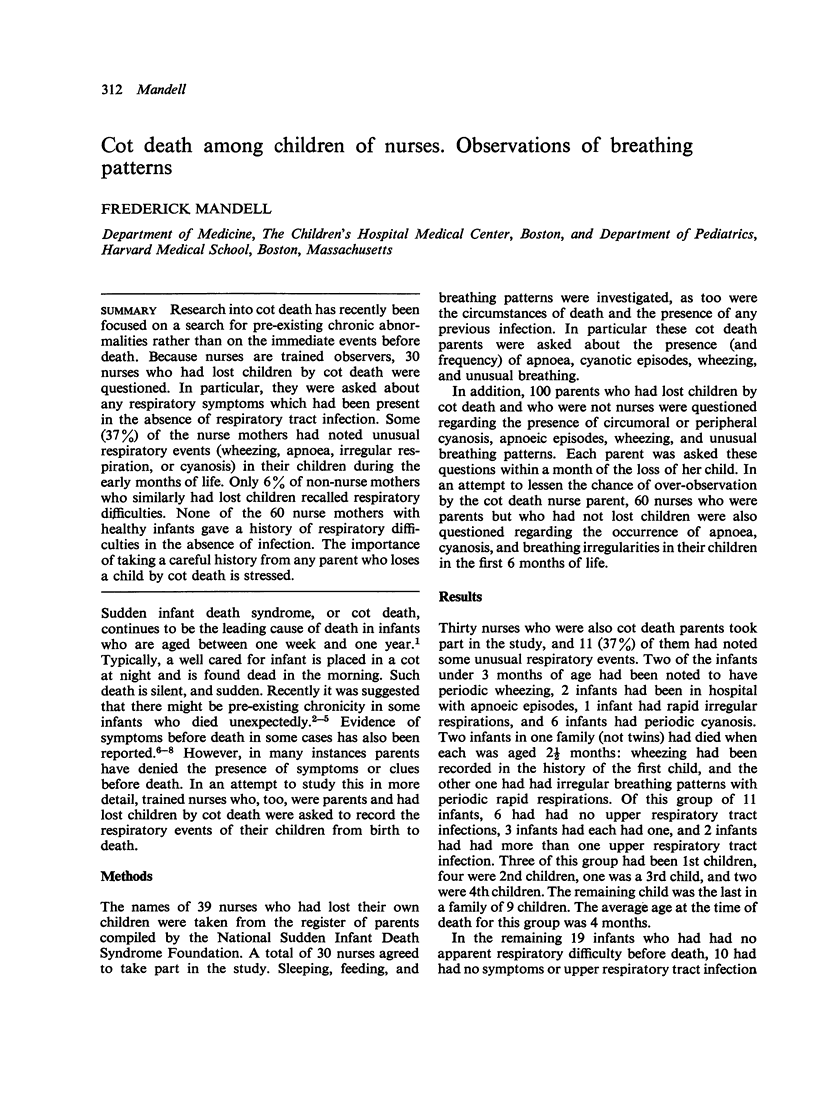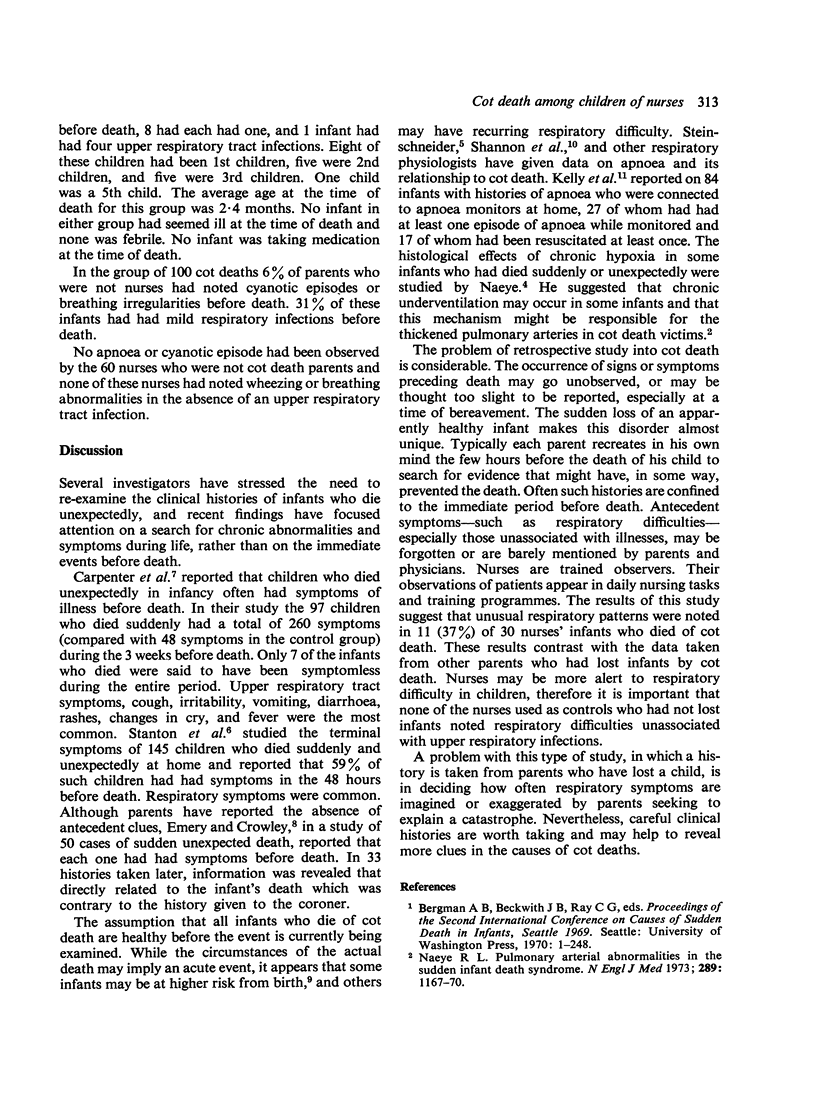Abstract
Research into cot death has recently been focused on a search for pre-existing chronic abnormalities rather than on the immediate events before death. Because nurses are trained observers, 30 nurses who had lost children by cot death were questioned. In particular, they were asked about any respiratory symptoms which had been present in the absence of respiratory tract infection. Some (37%) of the nurse mothers had noted unusual respiratory events (wheezing, apnoea, irregular respiration, or cyanosis) in their children during the early months of life. Only 6% on non-nurse mothers who similarly had lost children recalled respiratory difficulties. None of the 60 nurse mothers with healthy infants gave a history of respiratory difficulties in the absence of infection. The importance of taking a careful history from any parent who loses a child by cot death is stressed.
Full text
PDF


Selected References
These references are in PubMed. This may not be the complete list of references from this article.
- CROWLEY E. M., EMERY J. L. Clinical histories of infants reported to coroner as cases of sudden unexpected death. Br Med J. 1956 Dec 29;2(5008):1518–1521. doi: 10.1136/bmj.2.5008.1518. [DOI] [PMC free article] [PubMed] [Google Scholar]
- Carpenter R. G., Emery J. L. Final results of study of infants at risk of sudden death. Nature. 1977 Aug 25;268(5622):724–725. doi: 10.1038/268724a0. [DOI] [PubMed] [Google Scholar]
- Carpenter R. G., Gardner A., Pursall E., McWeeny P. M., Emery J. L. Identification of some infants at immediate risk of dying unexpectedly and justifying intensive study. Lancet. 1979 Aug 18;2(8138):343–346. doi: 10.1016/s0140-6736(79)90355-6. [DOI] [PubMed] [Google Scholar]
- Kelly D. H., Shannon D. C., O'Connell K. Care of infants with near-miss sudden infant death syndrome. Pediatrics. 1978 Apr;61(4):511–514. [PubMed] [Google Scholar]
- Naeye R. L. Pulmonary arterial abnormalities in the sudden-infant-death syndrome. N Engl J Med. 1973 Nov 29;289(22):1167–1170. doi: 10.1056/NEJM197311292892204. [DOI] [PubMed] [Google Scholar]
- Peterson D. R., Benson E. A., Fisher L. D., Chinn N. A., Beckwith J. B. Postnatal growth and the sudden infant death syndrome. Am J Epidemiol. 1974 Jun;99(6):389–394. doi: 10.1093/oxfordjournals.aje.a121627. [DOI] [PubMed] [Google Scholar]
- Shannon D. C., Kelly D. H., O'Connell K. Abnormal regulation of ventilation in infants at risk for sudden-infant-death syndrome. N Engl J Med. 1977 Oct 6;297(14):747–750. doi: 10.1056/NEJM197710062971403. [DOI] [PubMed] [Google Scholar]
- Stanton A. N., Downham M. A., Oakley J. R., Emery J. L., Knowelden J. Terminal symptoms in children dying suddenly and unexpectedly at home. Preliminary report of the DHSS multicentre study of postneonatal mortality. Br Med J. 1978 Nov 4;2(6147):1249–1251. doi: 10.1136/bmj.2.6147.1249. [DOI] [PMC free article] [PubMed] [Google Scholar]
- Steinschneider A. Prolonged apnea and the sudden infant death syndrome: clinical and laboratory observations. Pediatrics. 1972 Oct;50(4):646–654. [PubMed] [Google Scholar]


